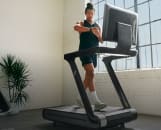
Mario Martinez via Getty Images
Why You Should Care About Ankle Mobility—Plus 11 Exercises to Try
Having strong, mobile ankles can help you move more efficiently in your workouts and everyday life.
By Jennifer Heimlich•
What Is Ankle Mobility?
11 Ankle Mobility Exercises for Improved Range of Motion
How to Check Your Current Ankle Mobility
Why Ankle Mobility Is Important
How to Increase Ankle Strength
Good mobility can be impressive. It might let you touch your toes, or reach your arms all the way behind your back, like in yoga’s Cow Face Pose. However, the most crucial mobility skills are often less flashy, and more functional.
Case in point: ankle mobility. “Our feet are our foundation,” says Peloton instructor Marcel Maurer. If your range of motion is restricted from the point where you hold yourself up from the ground, it can have cascading effects up the kinetic chain, affecting both your day-to-day movements, such as walking and climbing stairs, as well as what you get out of your workouts. So, even though no one is likely to be wowed by how far you can flex your feet, the payoff of regularly practicing ankle mobility exercises can be pretty major.
What Is Ankle Mobility?
Put simply, ankle mobility is the range of motion you can access and control at the ankle joint. It involves both stability and flexibility, says Mark Murphy, physical therapist and lead injury prevention and recovery specialist for the Center for Sports Performance and Research at Mass General Brigham.
Four main movements happen at the ankle. The two primary ones are pointing and flexing the feet (called plantar flexion and dorsiflexion). The feet can also rotate slightly inward and outward from the ankle joint (called inversion and eversion). Most of the time, when someone is working on ankle mobility, it’s an issue of limited dorsiflexion, or not being able to flex the foot deeply enough.
What Restricts Ankle Mobility?
Stiff ankles are usually caused by soft tissue tightness around the joint, Murphy says. For example, maybe your calf muscles or Achilles tendons are overly tight. Old injuries or overuse can also come into play. “[The ankle] gets relatively stiff as a protective mechanism,” he explains.
What’s going on higher up in the body can also affect your ankle mobility. For instance, Murphy says, a person whose pelvis tilts excessively forward or backward might not be able to access their full range of motion in the ankles because their alignment is off, forcing their ankles to compensate. Getting assessed by an expert, such as a physical therapist, is the best way to tell whether limited ankle mobility is coming from further up the chain or the ankle itself.

Peloton App
Access thousands of classes with no equipment needed.
11 Ankle Mobility Exercises for Improved Range of Motion
There’s no right or wrong time to work on your ankle mobility, says Marcel. That said, he recommends checking in with your ankles before every sweat session. “If you have the feeling they need a little bit of love, spend some time before your workout and prepare your ankles,” he says. “Your ankles and the rest of your body will be super thankful.
Murphy adds that incorporating ankle mobility exercises into a warm-up is also an easy way to make sure you actually do them consistently. Rather than dedicating 40 minutes to ankle mobility one day a week, the best way to open up that range of motion is to spend just a few minutes on ankle mobility exercises regularly, he explains.
But where should you start? These ankle mobility exercises, recommended by Marcel and Murphy, can help to unlock tight ankles and prep those joints for any challenges you put them through during your workout.
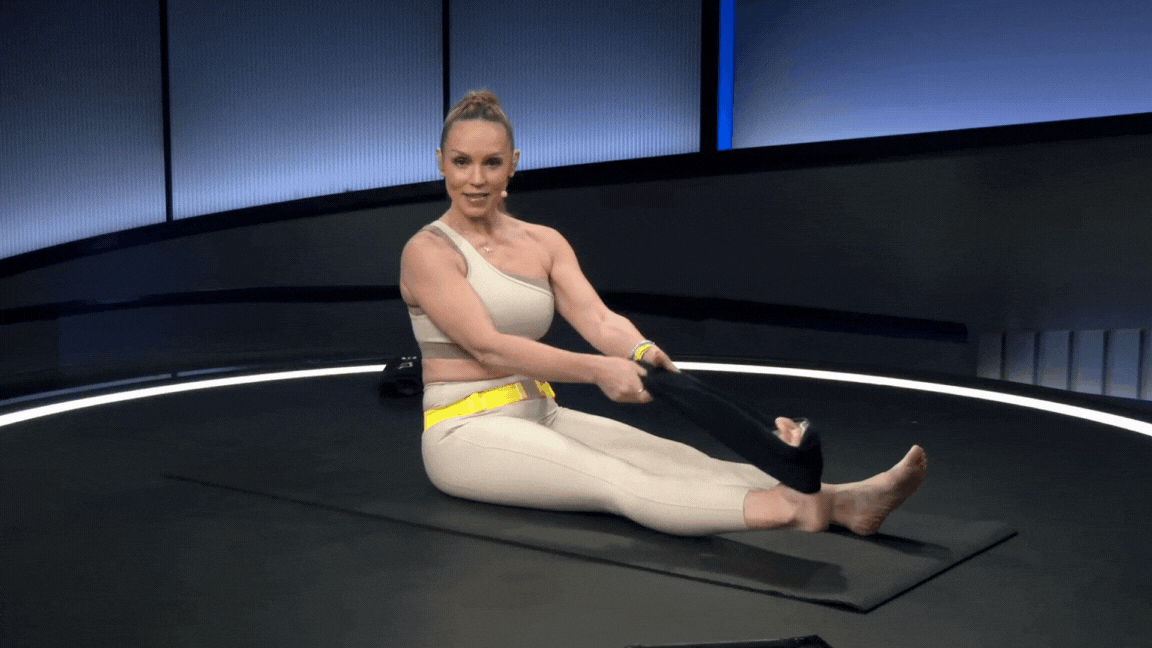
1. Ankle Plantar Flexion
Sit down on the floor with both legs outstretched. Loop a resistance band or towel around the ball of one flexed foot, and hold it with both hands.
Start to point your toes away from you, then return to a flexed position, releasing the tension.
Continue for 30–45 seconds, then repeat on the other side.
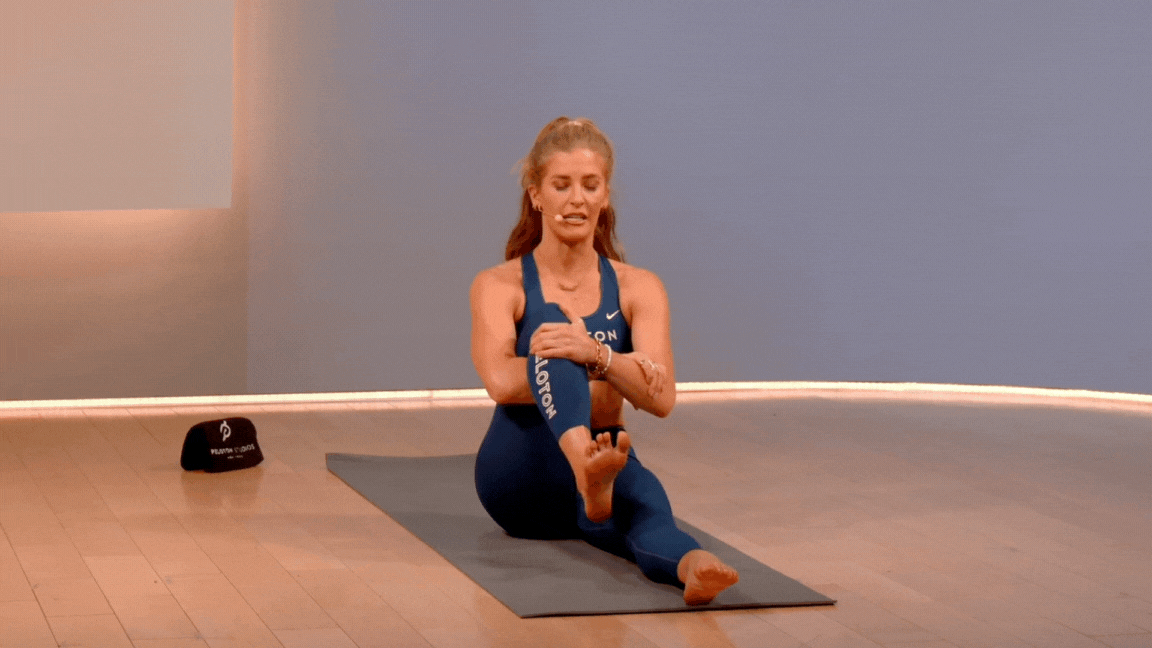
2. Seated Ankle Circles
Sit down on the floor with the left leg extended in front of you. Bend the right leg at the knee and loop the right arm underneath, so your right leg is resting in your arm and your foot is hovering off the floor.
Turn your front foot slowly in circles, alternating clockwise and counterclockwise directions. Be careful to move only your foot and not your leg.
Continue for 15–20 seconds, then repeat going in the opposite direction. Repeat on the other side.

3. Interlaced Ankle Circles
Sit down on the floor with your right leg extended in front of you. Bend the left leg at the knee and cross your left ankle over your right thigh so your left knee points out to the side.
Interlace the fingers on your right hand between the toes on your left foot. With your hand in this position, guide your left ankle through circles in one direction.
Turn your front foot slowly in circles, alternating clockwise and counterclockwise directions. Be careful to move only your foot and not your leg.
Continue for 15–20 seconds, then repeat going in the opposite direction. Repeat on the other side.
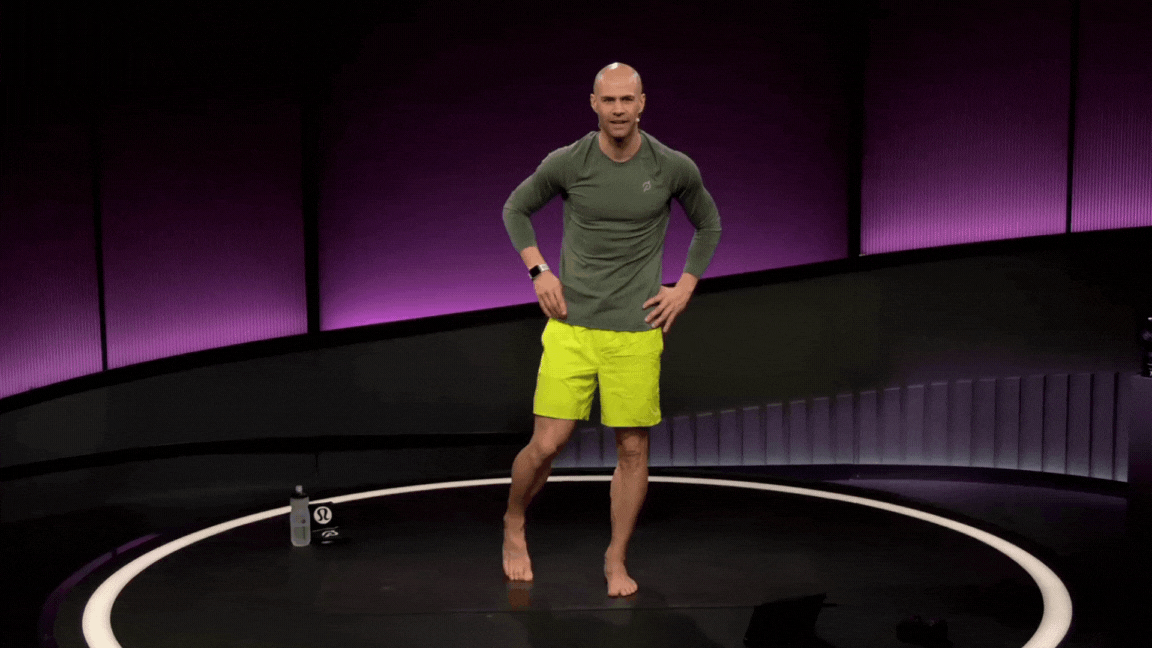
4. Standing Ankle Circles
Stand with your feet hip-width distance apart and shift your weight into your left foot. Come onto the toes of your right foot, bending the knee.
With your right toes barely touching the floor, gently make circles in one direction with your right ankle.
Continue for 15–20 seconds, then repeat going in the opposite direction. Repeat on the other side.
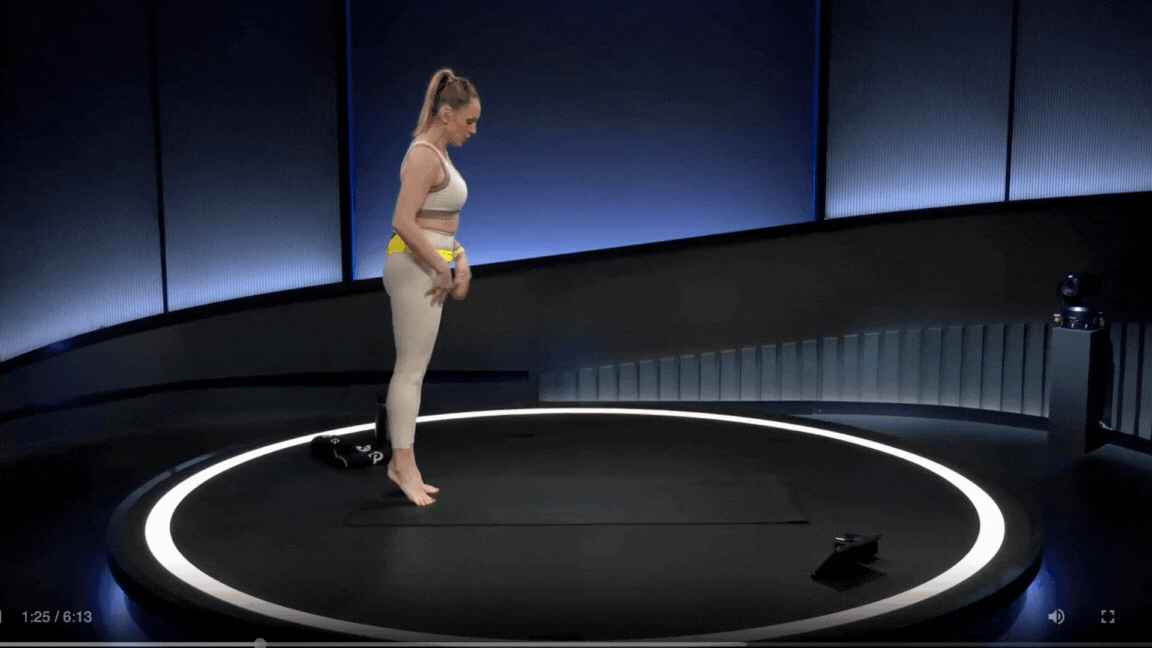
5. Toe-Heel Walks
Walk for 30 seconds while standing on your toes.
Then, walk for 30 seconds while standing on your heels.
Do 3 sets.
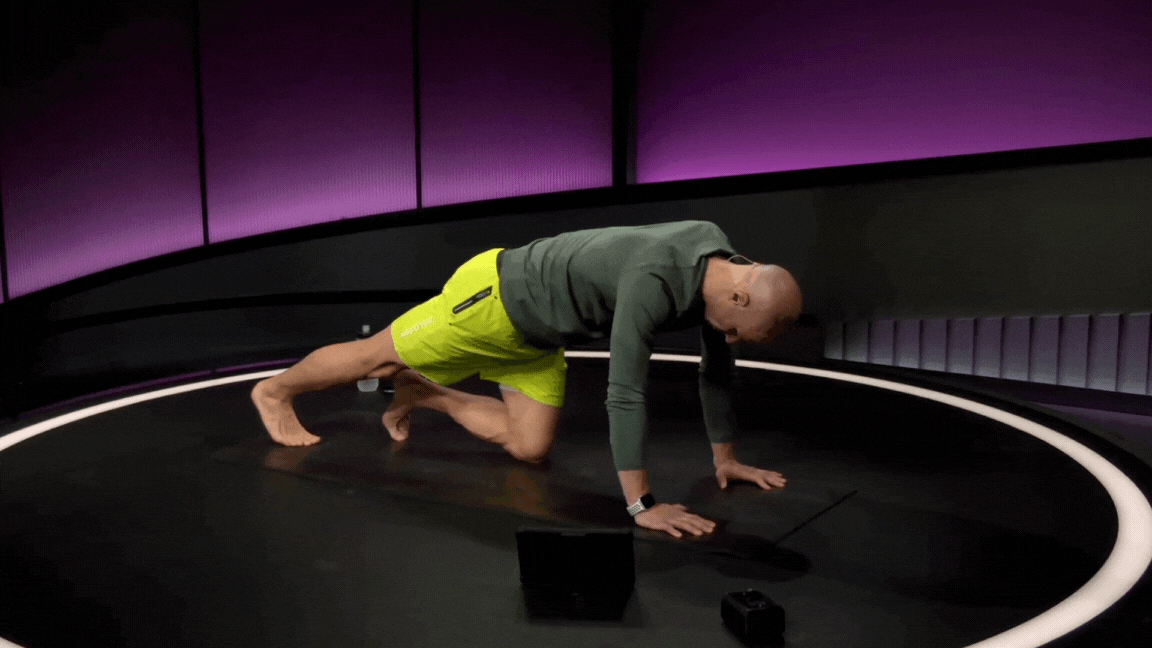
6. Single-Leg Plank Ankle Stretch
Find a high plank position with your feet together and palms on the floor directly underneath your shoulders. Lift your left foot and place it on top of your right heel. (To modify, lower your right knee to floor, as shown in the beginning of this clip.)
Maintaining this position, rock back on your right foot, sending your heel backward, until you feel a stretch in your right calf.
Hold for one second, then rock forward so your heel moves past your toes.
Repeat for 30–45 seconds, then repeat on the other side.
7. Supported Isometric Squat
Holding onto a squat rack or pole, stand with your feet hip-width apart, toes pointed slightly out.
Bend at your knees to squat down as low as you can until you feel a restriction in the ankle.
Hang out in that position for about 30 seconds. Press your feet into the ground to return to standing. Do 2–3 sets.
8. Eccentric-Focused Calf Raises
Start standing on the edge of a step or another elevated platform so that your heels are hanging off. Lift your heels to rise up onto the balls of your feet, then lift one foot off the step completely.
With the standing leg, slowly lower your heel until it’s below the edge of the step, taking three to five seconds to do so.
Press into the ball of your foot to return to the starting position.
Start with 1–2 sets of 10 reps on each leg, working up to three sets of 15 reps.

9. Kneeling Dorsiflexion Stretch
Start in a half-kneeling position with your left leg forward.
Keeping your left foot planted on the floor, gently press your left knee forward until you feel a stretch in your calf.
Hold for a few seconds, then release, shifting your knee backward.
Repeat for 30–45 seconds, aiming to stretch a little farther each time. Repeat on the other side.
10. Straight-Knee Calf Stretch
Stand facing a wall, about 1–2 feet away.
Place the leg you want to stretch about a foot behind your other leg.
With your hands on the wall, lean forward from the hips, bending only the front knee until the back calf muscle feels a stretch. Keep that back heel on the floor and the back knee straight the entire time.
Hold for about 30 seconds, then repeat on the other side.
11. Bent-Knee Soleus Stretch
Stand facing a wall, about a foot or two away.
Place the leg you want to stretch about a foot behind your other leg.
With your hands on the wall, bend both knees until the lower calf muscle (soleus) on the back feels a stretch. Continue to keep that back heel on the floor the entire time.
Hold for about 30 seconds, then repeat on the other side.
When can you expect to see results from doing these ankle mobility exercises? How long it takes to improve your ankle mobility varies widely, depending on what’s causing the restriction in the first place and how severe it is, says Murphy. For instance, if it’s an alignment issue, the right form cue could help you instantly find a bigger range of motion. Or, if the problem is due to muscle tightness, you could start to see improvement in just a few weeks if you practice these ankle mobility exercises several times a week.
Try an Ankles & Feet Mobility Class on the Peloton App
How to Check Your Current Ankle Mobility
Not sure whether your ankle mobility is up to snuff? While the best way to check is to see a physical therapist, there’s an easy at-home assessment you can try by yourself. Murphy suggests the weight-bearing lunge test. Here’s how to do it:
Get into a half-kneeling lunge position facing a wall, with your front toes about five inches away from the wall. (You can use the width of your hand to approximate the distance.)
Keeping your front foot flat on the floor, gently press your front knee forward and try to touch the wall with your knee. Make sure your heel doesn’t lift off the floor.
Repeat on the other side.
If you can touch your knee to the wall from this distance, that’s generally considered a normal range of motion. If you struggle to get there, it’s a sign that you might want to add more ankle mobility exercises to your routine.
Why Ankle Mobility Is Important
Having good ankle mobility allows you to move more efficiently—and with a smaller risk of injury For instance, “plantar flexion is really important to get full range of motion when you push off for running, walking, jumping, things like that,” Murphy says. “Dorsiflexion is also very important because that's where you allow your knee to move over your toe to go up and down stairs, and get on and off a chair.”
Good ankle mobility can improve your balance and stability in activities like running and cycling, Marcel adds. “It also offers you a greater range of motion for your strength workouts,” he adds. Think of a squat: If you’re unable to dorsiflex your ankle enough, your shin won’t be able to angle forward, and you won’t be able to lower as deeply into the squat. Reducing the range of motion you can access in the movement reduces the benefits you can get out of the exercise. Or, in a yoga pose like Downward-Facing Dog, tight ankles can alter the positioning of your body, affecting where you feel the stretch.
As Marcel puts it: “If they are stiff, the full movement is not working right. It could happen that your knees, pelvis, and lower back have to move in uncomfortable positions to compensate for the wrong position of your ankle.” That’s why performing ankle mobility exercises regularly could have a positive ripple effect throughout your body.
How to Increase Ankle Strength
Ankle mobility exercises aren’t just about improving your flexibility, but also increasing the ankle strength within that range of motion you’re working to open up. “Everybody's focused on stretching, but eventually you have to then use that mobility in a functional task,” says Murphy. In particular, he suggests focusing on eccentric strength training, or putting the muscle under force as it’s elongating (think: the lowering portion of a calf raise) to build strength in the full range of motion.
Really, flexibility and stability are two parts of an equation that work together to create a mobile ankle joint that’s going to help you perform the activities you love, Murphy says.
This content is for informational and educational purposes only and does not constitute individualized advice. It is not intended to replace professional medical evaluation, diagnosis, or treatment. Seek the advice of your physician for questions you may have regarding your health or a medical condition. If you are having a medical emergency, call your physician or 911 immediately.
Level up your inbox.
Subscribe for a weekly dose of fitness, plus the latest promos, launches, and events.
By providing your email address, you agree to receive marketing communications from Peloton.
For more about how we use your information, see our Privacy Policy.

